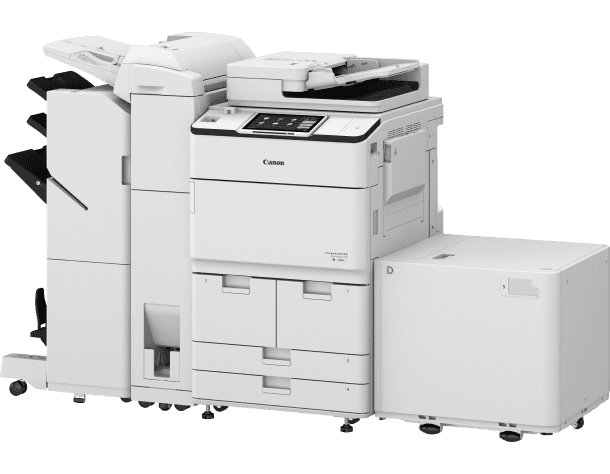Frustrated with the expenses of personal printers for confidential documents? Our Secure Print solution is the answer. Secure Print offers a solution by mandating user authentication at the device prior to job printing. Print tasks can be securely stored at the device, on a print server, or in the cloud until user authentication occurs and job selection is made. This approach mitigates the risk of leaving confidential documents unattended in the output tray, minimises print waste, and contributes to cost savings on paper, toner, and overall print volume.
How does Secure Print Work?
- Immediate printing
- Document sits in output tray for collection
- Disclosure of confidential information
- Potential GDPR breach
- Wasted Paper and toner
- Increased Printing costs
- Prints held on device, server or cloud
- Authentication required to print
- Documents are not forgotten about
- Reduced printing costs/waste
- Preview print at on MFD screen
- Track savings made from deleted jobs
of data breaches within companies with fewer than 500 employees involve paper records
don't have confidence in the security of their print infrastructure
What is Secure Print?
Most business printers and multifunction printers have their own native secure print options that allow you to set a PIN in the print driver. Your print job is stored in the device’s memory and can be released by entering the PIN you set in the driver.
This model of Secure Print groups all printing jobs together in the same screen on the device. The device itself does not require authentication and you will be able to see all other users print jobs, but you will only be able to release the jobs that match your PIN. This option may suit a small office with a limited number of users.
In a large organisation you may want to prevent the visibility of confidential jobs, so they do not appear in the print queue at all. An example of this might be HR printing a termination letter or P45. The name of the print job will be visible in the print queue and the device log. Applications like uniFLOW and Papercut can mask the filename and only present the user with their own prints.

Secure Print Authentication Options
Managed Print applications like uniFLOW & Papercut allow you to require authentication at the device before seeing the list of print jobs. Once you log in you will only see the jobs that have been submitted using your account. The print job can be held on a print server or in the cloud with uniFLOW Online. At the device, the user can be identified by their fingerprint, PIN, username and password, magnetic swipe card, proximity card or even via bluetooth on a smartphone
Once authenticated, the user can view and select their jobs directly on the MFD screen. The user can see a thumbnail of the first page of the job and select options, such as double sided, staple and colour before it is printed. If the job is no longer required, the user can also choose to delete the job rather than print it. The managed print application can even track the savings made from deleted jobs in in the database.
Secure Print Enforcement
The previous option is what we call Native Secure Print. It uses settings in the print driver to instruct your MFP to send the print job to the queue. You can default the print driver settings to Secure Print from the server or at each PC in your organisation. However, this does not force the use of Secure Print, as the user can simply change the output method back to direct print.
This model of Secure Print groups all printing jobs together in the same screen on the device. The device itself does not require authentication and you will be able to see all other users print jobs, but you will only be able to release the jobs that match your PIN. This option may suit a small office with a limited number of users.
Forced Hold also supports exceptions. For example, you may have an MFP in reception where non confidential documents for customers are printed on a regular basis. To save time, we can set an exception for the receptionist’s user account so that only these jobs can bypass the secure print function.

